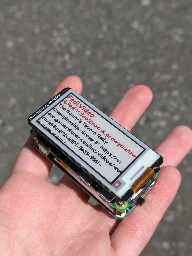raspberrypi
- Raspberry Pi OS’s yearslong switch from X Window to Wayland is now official - Ars Technicaarstechnica.com Raspberry Pi OS’s yearslong switch from X Window to Wayland is now official
Having fixed up performance for its older boards, Raspberry Pi is ready to ship its Wayland-focused desktop.
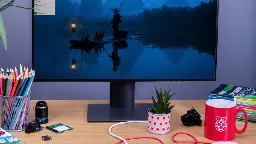
- Polar Aligment
I'm thinking about an IoT Polar Aligner. The main idea is to use a Raspberry Pi W with the camera module to find and detect the North Star and display it on the mobile phone. The final goal is to connect it with servos so that it can automatically align itself. Does anyone know of a similar open source project?
Croaspost: https://mander.xyz/post/20076877
- Raspberry Pi launch their own SSDs and SSD Kits, along with SD Cardswww.gamingonlinux.com Raspberry Pi launch their own SSDs and SSD Kits, along with SD Cards
Raspberry Pi have recently expanded their hardware offerings with their own SSDs and SSD Kits, plus they're also selling their own SD Cards now too.
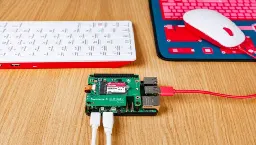
- 4b with multiple Zero over USB ethernet?
I've got a Zero set up with usb0 as g_ether and a static IP address:
usb0: flags=4099<UP,BROADCAST,MULTICAST> mtu 1500 inet 10.14.0.15 netmask 255.255.255.0 broadcast 10.14.0.255 ether 7e:24:7d:cc:68:7c txqueuelen 1000 (Ethernet) RX packets 0 bytes 0 (0.0 B) RX errors 0 dropped 0 overruns 0 frame 0 TX packets 0 bytes 0 (0.0 B) TX errors 0 dropped 0 overruns 0 carrier 0 collisions 0I have the OTG port connected to one of the four USB ports on a 4b. I'm not sure what the next steps are to get the actual connectivity to function, though. I've seen posts saying that gadget mode is only supported on the USB-C port - does that only mean for using the 4b as a peripheral, or does that mean for any connectivity, even if it's the host?
- Pilet Mini Computer
https://www.raspberrypi.com/news/pilet-mini-pi-5-modular-computer/
- Any cases for Pi5 with NVME Base bottom hat??
As the title says looking for a case that works with the NVME base bottom hat I've looked but not found anything. Just asking in case I didn't dig deep enough any help is welcome.
- Is there a way to get the raspberry pi 3 b+ to display 1080i via the HDMI port?
I have a pi running pihole next to my retro console TV and would like to make it into an ad blocked YouTube player.
I've been looking on and off for a month to figure it out and the only things I find are for RCA cables or for the old way to change resolution from the 2010's.
- Are there any neat cases for the Raspberry Pi 3B+?
I am not sure if any interesting ones have been made since focus shifted towards the 4 and 5. Maybe there are some specifically designed around using different HATs like UPS, LoRa, or the camera module.
I'm mostly seeing the average layered 3D printed cases and the mock consoles designed for emulation.
I'd also be interested in hearing some neat projects people are using them for. I have two spares from a while ago that I used for a NAS and an e-ink displayed weather forecast.
- automated camera for daily photos of construction site
Hello everyone, looks like we will start on building our dream home this year. I do want to set up a raspberry for automated photo shooting from the construction site. One picture per day is enough, I do want to create a timelapse video afterwards. The new neighbour is a friend, he allowed me to set up the camera in his house facing the construction site. Only problem he does not have a power supply at his window...
Anyone having experience with a solar module and a battery to power the raspi? Feel free to share your jdeas!
- Revised Raspberry Pi 5 chip comes with unexpected power savingsarstechnica.com Revised Raspberry Pi 5 chip comes with unexpected power savings
What we don't know is whether 4GB or 8GB Pis will get the tweaked chip design.
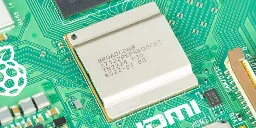
- Pi Pico 2 Extreme Teardownelectronupdate.blogspot.com Pi Pico 2 Extreme Teardown
Teardown and analysis of electronics. Integrated circuit design analysis.
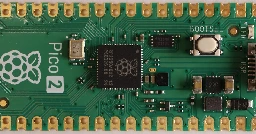
This is a good blog post, with die photos of the new RP2350 chip and a brief description of what they show. There is a link to a 12 minute youtube video that is also very good, that discusses the die shots in more detail and also goes over the rest of the Pico 2 circuit board, including die shots of the QSPI flash chip and the voltage regulator chip.
- Pi Zero Webcam

I remember the last time I tried to find a cheap webcam that works on linux, I gave up pretty quickly and just used my laptop for video calls. Saw this guide to build one with a zero 2, had a spare board in my parts drawer so thought why not. I'm surprised by the quality of it. I've been using it for work meetings.
- How to automate your home with a Raspberry Piwww.pocket-lint.com How to automate your entire smart home with only a Raspberry Pi
If you're in possession of a DIY attitude and some spare time, a single Raspberry Pi board could be running your entire smart home.
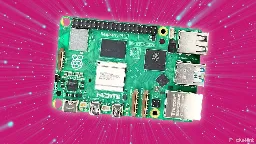
- So apparently if you echo "export PAN_MESA_DEBUG='gofaster'" > ~/.bashrc it will make pretty much everything faster. Now, if you do that but with "gofaster:gofaster" it will make things even FASTER...
...at the expense of breaking some commands here and there. Why is that? How come env values can have this much impact in performance "for free"? This MUST have some caveats, right?
Thanks in advance.
- Introducing Raspberry Pi Pico 2
cross-posted from: https://wired.bluemarch.art/post/306975
> > We’re happy to announce the launch of Raspberry Pi Pico 2, our second-generation microcontroller board, built on RP2350: a new high-performance, secure microcontroller designed here at Raspberry Pi. > > > > With a higher core clock speed, twice the memory, more powerful Arm cores, new security features, and upgraded interfacing capabilities, Pico 2 delivers a significant performance and feature uplift, while retaining hardware and software compatibility with earlier members of the Pico series. > > > > Pico 2 is on sale now, priced at $5.
- Digital Panel for your old carblog.bricogeek.com Panel digital para tu coche con Raspberry Pi | BricoGeek.com
Si tu coche ya es algo antiguo y quieres modernizarlo un poco, puedes añadirle un panel digital táctil por muy poco, utilizando una Raspberry Pi junto a su pantalla táctil

I found this tutorial about how to use a raspberry pi to add a digital panel to old cars (canbus port needed)
- Pi in spaaaaace... for a bit longer than plannedwww.theregister.com Pi in spaaaaace... for a bit longer than planned
Ariane 6 might have had some APU problems, but the well-Armed hardware on YPSat worked well
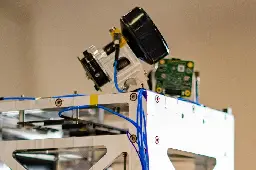
- SD Card Copier
Just used this for the first time. I know it's dumb and small, but copying my whole setup and moving it to a new quicker SD without any hassle was gorgeous. I truly adore my Raspberry Pi.
- Plug and play USB microphone
Can anyone suggest a plug and play USB mic for my raspberry pi (that you've used and know it works). I've managed to avoid work meetings on teams for a long time but there's one I can't get out of and my laptop broke so I'm computing only on my pi for the time being. Don't really care for webcam, noone needs to see me, but I need to be able to speak to them.
- How do I install docker on a Raspberry Pi 5?
Friends... my new Raspberry Pi makes me crazy!!!
I would like to install Docker on the RPi5 (8 GB). I am following this guide: https://docs.docker.com/engine/install/ubuntu/#install-using-the-repository
However, at step 2:
sudo apt-get install docker-ce docker-ce-cli containerd.io docker-buildx-plugin docker-compose-pluginI always get the error:E: Package 'docker-ce' has no installation candidate E: Package 'docker-ce-cli' has no installation candidate E: Unable to locate package containerd.io E: Couldn't find any package by glob 'containerd.io' E: Couldn't find any package by regex 'containerd.io' E: Unable to locate package docker-buildx-plugin E: Unable to locate package docker-compose-pluginThen I found out that at step 1:
sudo apt-get update sudo apt-get install ca-certificates curl sudo install -m 0755 -d /etc/apt/keyrings sudo curl -fsSL https://download.docker.com/linux/ubuntu/gpg -o /etc/apt/keyrings/docker.asc sudo chmod a+r /etc/apt/keyrings/docker.asc echo \ "deb [arch=$(dpkg --print-architecture) signed-by=/etc/apt/keyrings/docker.asc] https://download.docker.com/linux/ubuntu \ $(. /etc/os-release && echo "$VERSION_CODENAME") stable" | \ sudo tee /etc/apt/sources.list.d/docker.list > /dev/null sudo apt-get updateI receive the error:Hit:1 http://deb.debian.org/debian bookworm InRelease Hit:2 http://deb.debian.org/debian-security bookworm-security InRelease Hit:3 http://deb.debian.org/debian bookworm-updates InRelease Hit:4 http://archive.raspberrypi.com/debian bookworm InRelease Ign:5 https://download.docker.com/linux/ubuntu bookworm InRelease Err:6 https://download.docker.com/linux/ubuntu bookworm Release 404 Not Found [IP: 18.165.183.12 443]What I am doing wrong? :-( What am I missing? Why can't this IP be found?
Many thanks! :-)
- Hello anybody know how to flash debian to EMMC on an Orange Pi 3G IOT B?
cross-posted from: https://sh.itjust.works/post/20857188
> I can't seem to get it to work. I always get these errors in the terminal when running the spi flash tool that they recommend: >
Connecting to BROM... > Scanning USB port... > Search usb, timeout set as 3600000 ms >> and then eventually an S_TIMEOUT. I think my thinkpad is not even detecting the orange pi at all through usb. Anybody have experience with this. The official documentation is really bad. > I also seem to get this on startup of the flash tool: >QMetaObject::connectSlotsByName: No matching signal for on_pushButton_browser_clicked() > QThread::setPriority: Cannot set priority, thread is not running > "05-14-2024" > QObject::moveToThread: Cannot move objects with a parent > - How to save an old printer from the e-waste pile with a Raspberry Piounapuu.ee How to save an old printer from the e-waste pile with a Raspberry Pi
Turning a 15-year-old Canon PIXMA MP250 printer into a network printer was much easier than I initially thought.
- SD Card fails to format using official SD Card format tool on Windows
I don't get a very detailed error message but it fails and tells me to try reinserting it. I've tried a few times. It fails at different percentages sometimes. Any thoughts or ways to get a more detailed error message? I have Mac and Linux too.
- Computing firm Raspberry Pi pops 38% in rare London market debutwww.cnbc.com Computing firm Raspberry Pi pops 38% in rare London market debut
Shares of Raspberry Pi surged Tuesday, rallying by more than 38%, as the British computing startup sought to raise some £166 million ($211.2 million) from its initial public offering.
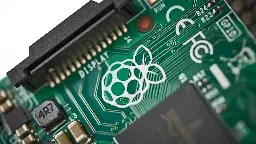
- How To Improve Pi 5 Cooling
So I've got an 8GB Pi 5 with the offical Active Cooler and then the Pineberry NVME HAT on top in the Pi52 tall alumnium cooling case and thermals are not great. Looking for guidance and/or recommendations.
I already have the active cooler so I'm all out of fan headers, and I have 3 hard drives plugged in so I'm not sure about powering a whole USB fan.
I saw that Noctua finally came out with their desk fan and thought that may be a perfect solution. I was thinking of just slapping it under the Pi, but I was wondering if this would even make a difference.
Also wondering what the best configuration would be between push/pull & bottom/top or if anybody has better ideas, I'm all ears. Thank y'all!
- What is the quickest and simplest to get RetroPi?
Hey all! I wanted to build/buy a retro gaming console with Raspberry Pi to play roms. What is the simplest way to do this? Can I buy a Raspberry Pi that has RetroPi installed already, then just dump my roms onto it?
Thanks 👍
- Raspberry Pi unveils Hailo-powered AI Kit to make the model 5 smarterwww.theregister.com Raspberry Pi unveils Hailo-powered AI Kit for model 5
13 TOPS for $70 has PiBoss Eben Upton predicting an ML explosion
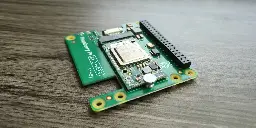
- Build your OWN Apple TV—with a Raspberry Pi - YouTube
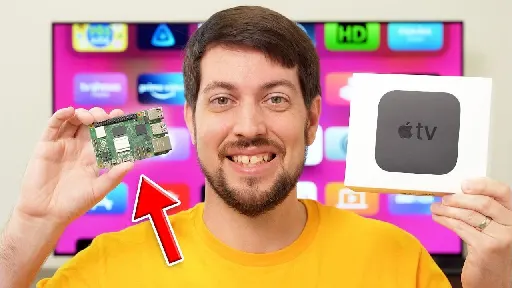
YouTube Video
Click to view this content.
- Cute tiny desktop PC is a gaming-inspired case for the Raspberry Pi 5 - Yanko Designwww.yankodesign.com Cute tiny desktop PC is a gaming-inspired case for the Raspberry Pi 5 - Yanko Design
The Raspberry Pi, lovingly called RPi by fans, did for electronics what 3D printing did for design. It allowed almost anyone to come up with interesting, innovative, and sometimes just amusing projects that need a very small and cheap computer to function. The size of a credit card and less than $10...
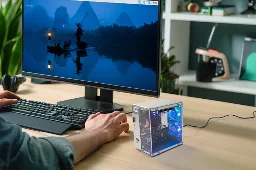
- SupTronics Raspberry Pi 5 UPS HAT X1202 V1.1 takes four 18650 batteries delivering up to 25W - CNX Softwarewww.cnx-software.com SupTronics Raspberry Pi 5 UPS HAT X1202 V1.1 takes four 18650 batteries delivering up to 25W - CNX Software
SupTronics Raspberry Pi 5 UPS HAT - An Pi 5 UPS designed to handle the high power demands of Raspberry Pi 5 even during power outages
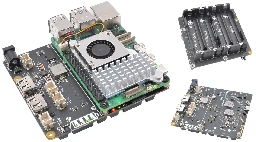
This seems really cool to me.
- DietPi 9.4 Released
DietPi is an excellent ARM SBC debian distro if you want to run a DIY NAS/media server/Pi-Hole/torrent platform.
They have a great set of CLI tools to cover most common use cases for a headless device. Personally, I found their tooling to be a great introduction to CLI linux. The baseline tools have you covered, but you can start experimenting once are comfortable with linux CLI (and you need to implement some custom solutions).
One cool feature that it has is that logging is done in RAM, thus extending the life of your SD card.
I've been using DietPi since 2018. For a relatively small distro (about ~100K users), they are very active and responsive on their communication channels.
- Raspberry Pi Ltd is considering an IPO
"Raspberry Pi Ltd, a leader in low-cost, high-performance computing, announces that it is considering an initial public offering (the "IPO" or the "Offer") and that it intends to publish today a registration document (the "Registration Document"). The Company is considering applying for admission of its ordinary shares to the premium listing segment of the Official List of the FCA and to trading on the Main Market of the London Stock Exchange ("Admission")."
- [Resolved] Cannot Reconnect With Static IP
I have a Raspberry Pi 02W running Pi-Hole and ordinarily things work perfectly, but I've got something in my house tripping my fuse box which I'm unable to locate. The tripper, not the fuse box. Anyway, what it means is occasionally, I lose power and so my router and my Pi-Hole go down.
I've configured my
/etc/dhcpcd.confso that my RPi02W can have a static IPinterface wlan0 static ip_address=192.168.1.100/24 static routers=192.168.1.1 static domain_name_servers=194.168.4.100 194.168.8.100And have rebooted to confirm it's fine, and it's fine.However when the router goes down and I bring everything back up, the Pi-Hole can't reconnect to the router. I can log in to the router and see it connect briefly, but it's only briefly and then nothing. I even try enabling DHCP on the router and it still refuses to reconnect. Ultimately the only way to get it to reconnect is to factory reset the router, change the password back to my usual password, wait for the RPi02W to connect and then disable the DHCP again. Needless to say it's a pain in the arse.
What am I doing wrong? How do I fix this?
#Solution I switched the DNS servers from Virgin Media to 8.8.8.8 and that seems to fix it. Not sure why, but it does.
- [PARTIALLY SOLVED] Installation with disk encryption
I recently acquired a Raspberry Pi 5, but I've been having a lot of difficulty in getting LUKS encryption to work. Has anyone had any luck?
Also, I am using an NVMe drive, so Raspbian is really the only OS that works well. NetBSD can see the disk, too, but I found it annoying to use; and FreeBSD ended up breaking itself. I have not yet tried Armbian.
